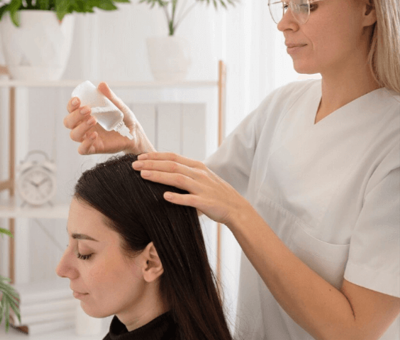Melasma is a complex and chronic skin condition that requires much more than a one-size-fits-all solution. Korean dermatologists are globally recognized for their precise, science-backed, and patient-specific approach to melasma treatment. With deep experience treating diverse skin types—particularly Fitzpatrick III–V—Korean clinics blend technology, medical expertise, and a personalized care philosophy to deliver visible, lasting results.
This guide explores how Korean dermatologists assess, plan, and adapt melasma treatment for each individual patient, whether they’re local or visiting from abroad.
🎯 Why Personalization Matters in Melasma Treatment
Melasma isn’t just about pigmentation. It’s influenced by:
- Depth of pigment (epidermal, dermal, or mixed)
- Skin type and tone
- Hormonal influences (pregnancy, birth control, thyroid disorders)
- Sun and heat exposure history
- Past treatments or product reactions
- Lifestyle and travel patterns
A personalized plan maximizes results while minimizing risk, especially the risk of rebound pigmentation or post-inflammatory hyperpigmentation (PIH).
🔍 Step-by-Step: How Korean Dermatologists Personalize Treatment
1. Comprehensive Skin Analysis and Diagnosis
Korean dermatology clinics start with a multi-faceted assessment, including:
- Visual exam of pigmentation pattern
- Wood’s lamp to identify pigment depth (epidermal vs. dermal)
- VISIA or OBSERV imaging for vascular, pigmentation, and inflammation mapping
- Medical and hormonal history including birth control use, thyroid issues, pregnancy, and family history
- Skin barrier analysis to assess sensitivity and tolerance
Clinics treat melasma as a chronic inflammatory condition, not just a cosmetic issue—this shifts the entire treatment strategy.
2. Melasma Type Classification
Personalization begins with correctly identifying the type of melasma:
| Type | Characteristics | Response to Treatment |
|---|---|---|
| Epidermal | Brown, well-defined patches | Responds well to topicals and lasers |
| Dermal | Blue-gray, poorly defined edges | Harder to treat, requires advanced lasers |
| Mixed | Combo of both | Most common type |
| Vascular Melasma | Red or pink hue along with pigment | Needs anti-inflammatory or vascular treatment |
This classification directly influences the choice of laser, medication, and frequency of treatment.
3. Customized Laser Protocols
Korean dermatologists do not use the same laser settings for everyone. They adjust:
- Laser type (Q-switched Nd:YAG, Pico, IPL for vascular melasma)
- Fluence (intensity) based on pigment depth and skin sensitivity
- Pulse duration for gentler stimulation in darker skin tones
- Frequency of sessions based on patient’s schedule and response
For example:
- Epidermal melasma → lower fluence, frequent sessions
- Dermal melasma → slow-paced toning or PicoPlus to avoid rebound
- Vascular melasma → may include IPL or laser Genesis for capillaries
4. Selective Use of Oral Medication
👉 Tranexamic Acid (TXA):
- Dosage (250–500 mg/day) is adjusted by weight, clotting risk, and hormonal profile
- Korean dermatologists often use it in cycles (e.g., 3 months on, 1 month off)
Other considerations:
- Iron supplements may be added for women with anemia-induced melasma
- Hormonal evaluation or gynecological referral if melasma flares around menstruation
5. Topical Regimens Based on Skin Type & Tolerance
Rather than a blanket prescription, clinics customize topicals:
| Skin Profile | Prescribed Topicals |
|---|---|
| Sensitive | Niacinamide, azelaic acid, botanical TXA |
| Oily | Tretinoin, arbutin, low-dose hydroquinone |
| Dry | TXA serum + barrier creams (ceramides, panthenol) |
| Reactive | Cysteamine or enzyme-based depigmenting masks |
Hydroquinone, if used, is typically prescribed for 4–6 weeks only, followed by a “rest” period with non-irritating brighteners.
6. Add-On Treatments Based on Progress and Patient Goals
During follow-up, treatment is fine-tuned based on how the skin responds.
Add-ons may include:
- Mesotherapy with TXA and glutathione for quick tone improvement
- LED therapy to reduce inflammation and calm redness
- Low-concentration chemical peels like mandelic acid if skin texture is rough
- Vitamin C iontophoresis to boost brightness gently
Korean clinics often adjust treatments monthly or bi-weekly, depending on pigmentation recurrence, irritation, or skin fatigue.
🌤️ Lifestyle & Environmental Factors Are Also Addressed
Korean dermatologists go beyond clinical procedures—they educate patients on:
- Strict photoprotection: SPF 50+/PA++++, tinted sunscreen (iron oxide), UPF clothing
- Heat avoidance: Saunas, hot yoga, spicy food, and overuse of hot water
- Stress and hormonal balance: Especially in women with cycle-linked melasma
- Skincare product compatibility: Avoiding fragranced or exfoliating products that might worsen inflammation
🧳 For Medical Tourists: Personalized Plans on a Tight Timeline
International patients are given tailored short-term programs, usually over 5–14 days:
| Timeframe | Plan |
|---|---|
| Day 1 | In-depth consultation, imaging, initial treatment |
| Day 2–10 | 2–3 laser sessions + topical or meso booster |
| Final Day | Post-care kit, written instructions, online follow-up options |
Clinics also adjust aggressiveness based on a patient’s return travel date to avoid redness or photosensitivity while flying.
🏥 Top Clinics Known for Personalized Melasma Treatment in Korea
| Clinic | Strengths | Personalization Features |
|---|---|---|
| Banobagi Dermatology | Pigment layering analysis | Multi-step consultation, VISIA imaging |
| Oracle Skin Clinic | Medical tourists | Step-wise TXA and laser programs |
| Regen Dermatology | Advanced laser toning | Custom frequency protocols |
| THE ME Clinic (Myeongdong) | Short-stay travelers | Express plans with take-home kits |
| MUSE Clinic | Budget-conscious patients | Adjustable toning and topical strategy |
💬 Final Thoughts: Why Korean Dermatology Excels at Melasma Care
Korean dermatologists approach melasma with clinical depth, empathy, and flexibility. Instead of focusing only on pigment removal, they:
- Treat the root cause (inflammation, hormones, vascularity)
- Protect the skin barrier
- Build layered protocols that evolve with your skin
- Prioritize long-term prevention just as much as treatment
If you’re struggling with melasma or seeking advanced care, Korea offers a gold-standard model for personalized pigment therapy.
Would you like this formatted as:
- A clinic handout or e-brochure for international patients?
- A blog post with visual charts for your website?
- A translated version in Arabic, Thai, Vietnamese, or Chinese?




